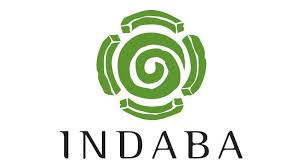
The Canadian Path delivers a balanced program to all youth members. During their journey in Scouting, youth members regularly participate in adventures relating to each of the six Program Areas: Environment & Outdoors, Leadership, Active & Healthy Living, Citizenship, Creative Expression and Beliefs & Values.
What to know how to do a Grand Howl? What’s an opening game? How does the White Tail council work? During their journey in Scouting, youth members regularly participate in meetings where they learn in a youth-led, non-formal educational experience of play and discovery. Youth gain formal and informal leadership skills during these experiences.
Scouts Canada has established a process to assist youth and their Scouters as they seek to plan, do and review safe and adventurous Scouting programs. The program quality framework includes objective criteria to aid in the planning process, and to serve as a set of self-assessment tools to assist youth and Scouters in the evaluation and improvement of their programs.
Our Scouting Year can be divided into four program cycles, aligned with the seasons. With each new season, we can imagine great new adventures. Each Section has a series of assessment questions to help evaluate its program. This session let’s you practice how to do this in fun interactive activities for all age groups.
Scouts Canada has established a process to assist youth and their Scouters as they seek to plan, do and review safe and adventurous Scouting programs. The program quality framework includes objective criteria to aid in the planning process, and to serve as a set of self-assessment tools to assist youth and Scouters in the evaluation and improvement of their programs.
Our Scouting Year can be divided into four program cycles, aligned with the seasons. With each new season, we can imagine great new adventures. Each Section has a series of assessment questions to help evaluate its program. This session let’s you practice how to do this in fun interactive activities for all age groups.
It is Scouts Canada’s mission to help youth develop into well rounded individuals better prepared for success in the world. In today’s world, more than ever before, this requires some basic literacy, self-confidence and curiosity in the STEM fields (Science, Technology, Engineering and Math). More importantly, STEM can be used as a powerful tool to help youth gain necessary 21st century skills such as critical thinking, problem solving, environmental and technology literacy, and collaboration.
To this end, we have a diverse and hands-on STEM program that aims to foster curiosity, nurture interest, increase self-confidence and break stereotypes around STEM and provide youth with exciting learning opportunities.
The Patrol (Team) System is the recognition that everyone has something to offer the team. Everyone must be included and no one can be left behind as the team takes on its chosen adventures. Everyone has a say in what the group chooses to do.
By working together in a mutually supportive spirit, the team can accomplish more than any one member could accomplish alone. Responsibilities and leadership are shared among the group, with the support and mentorship of the Scouters, who create a safe and respectful atmosphere in which the team can work
Curious about all of the strange little ceremonies you keep hearing about? We can help with that! Some things are best learned by doing. Grand Howl, Mouse Howl, Investiture, River Banks and so much more. All Sections.
Become a master of games. Quiet games, wide games, water games, steam off games, which ones played when or where. Importance of games as a learning opportunity.
It is Scouts Canada’s mission to help youth develop into well rounded individuals better prepared for success in the world. In today’s world, more than ever before, this requires some basic literacy, self-confidence and curiosity in the STEM fields (Science, Technology, Engineering and Math). More importantly, STEM can be used as a powerful tool to help youth gain necessary 21st century skills such as critical thinking, problem solving, environmental and technology literacy, and collaboration.
To this end, we have a diverse and hands-on STEM program that aims to foster curiosity, nurture interest, increase self-confidence and break stereotypes around STEM and provide youth with exciting learning opportunities.
Nature is an ideal setting for personal development and recreation. Youth join Scouting for the opportunity to participate in camping and outdoor adventures that they have been involved in planning. These activities must be fun and engaging for members and comply with recognized health and safety practices. As Scouts, we have a responsibility to live in harmony with the natural environment and ensure that our outdoor adventures leave no trace.
Through ‘The Canadian Path’, youth have the opportunity to develop in all aspects of their lives. In their personal progression through the adventures on The Canadian Path, youth work on all of the following dimensions of personal growth: social, physical, intellectual, character, emotional and spiritual. The acronym for these six dimensions is “SPICES”. They give shape to our Scouts Canada programming. For young people to reach their full potential, they need to explore each of these six dimensions of development.
On ‘The Canadian Path’, we are aware of each individual’s personal progression, as well as his or her background. Scouting is a journey, which means that youth make the program their own according to their own interests, goals and abilities.
This approach to Scouting is sometimes referred to as “age appropriate facilitation”; however, the program may be adapted not only according to age, but according to other factors, such as gender, sexual orientation and religion. Scouters must appreciate the diversity within their Sections and adjust the way that they facilitate the program accordingly.